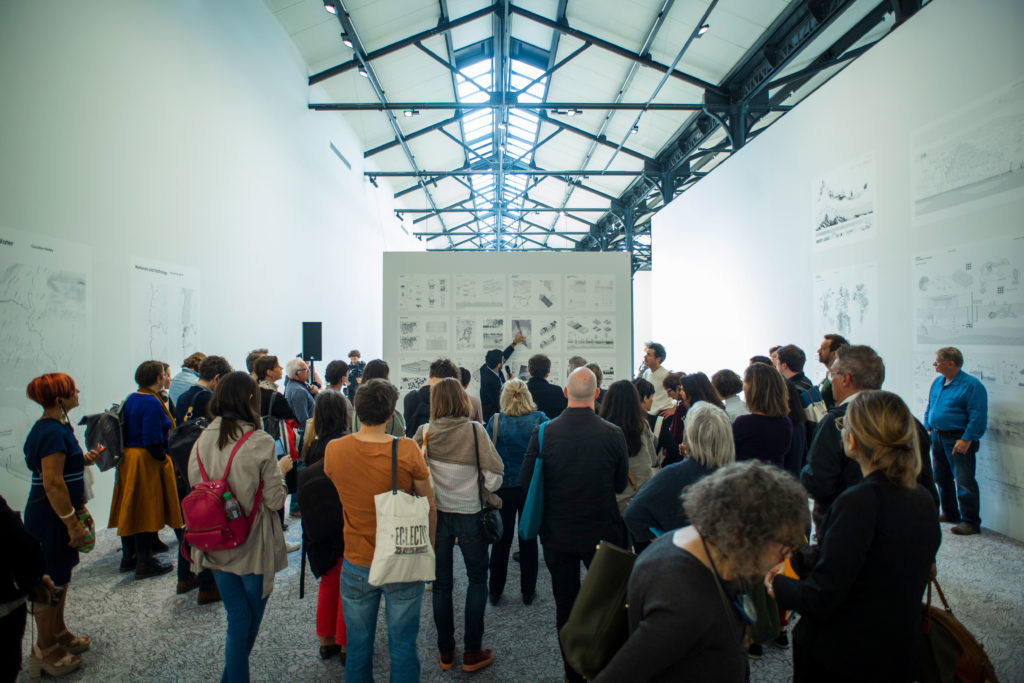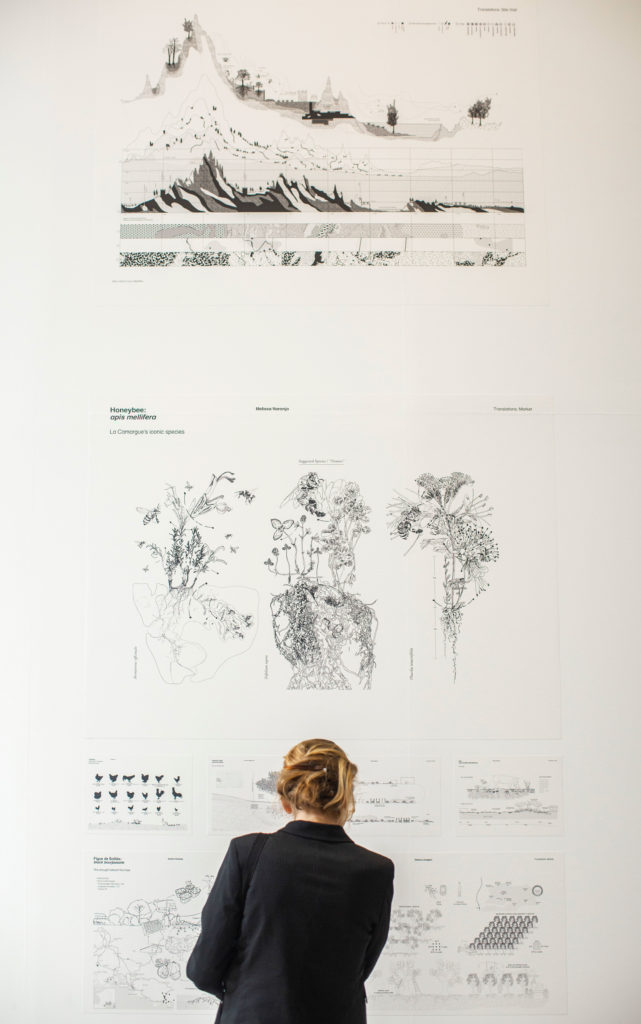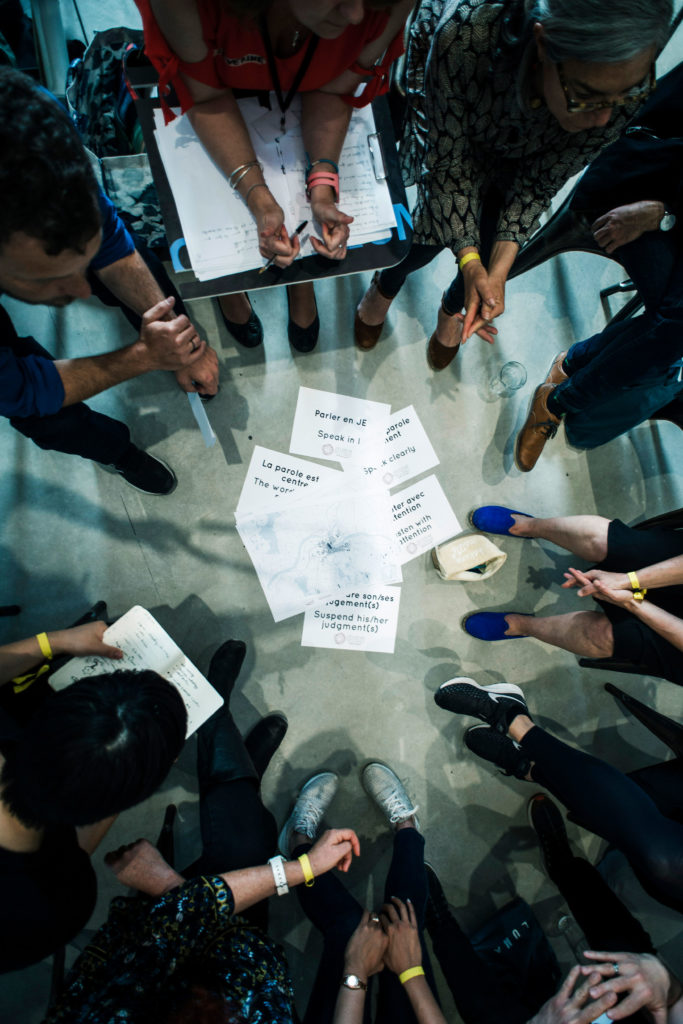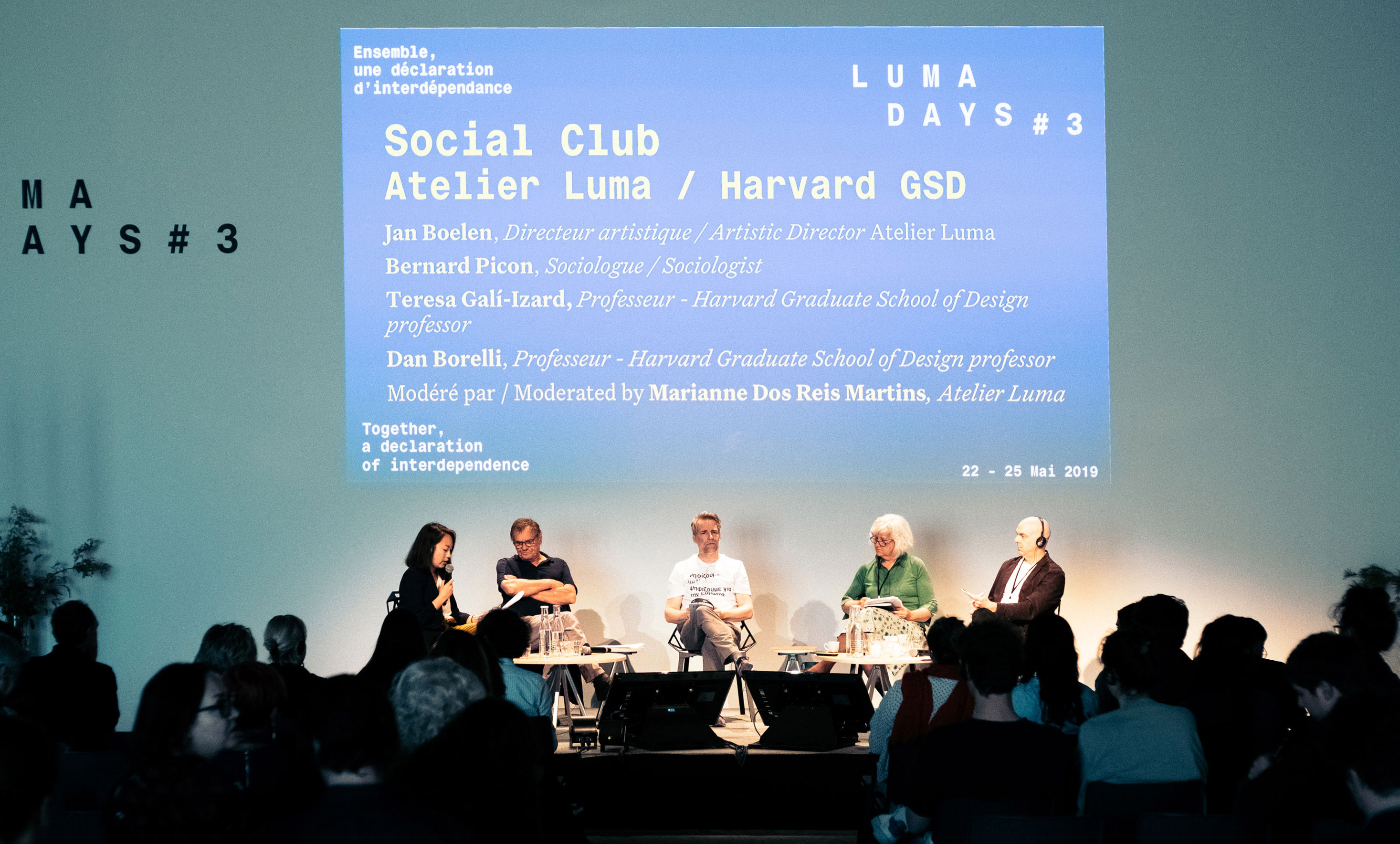Humans have exploited soil—truly, much of nature—for millennia. Soil can hold eras’ worth of stories and history, human and natural. And the soil surrounding plants’ roots, teeming with microorganisms and their constant activity, provides a particular design space. This space of life—called the rhizosphere—is the platform for delicate interactions between climate and geology, a site of layering of events and histories over time.
It was with interest in this design space that Teresa Galí-Izard, Associate Professor of Landscape Architecture, conceived her Fall 2018 Harvard Graduate School of Design option studio “RHIZOSPHERE.” The studio sought to investigate the rhizosphere and the stories it can tell, taking up the Mediterranean region of La Camargue, France, as its site of focus. And thanks to engagement from the Luma Foundation, the studio’s findings have been brought back to the ground that inspired them, in the form of an exhibition that was on view for the month of May at Luma’s Parc de Ateliers space in Arles, France.
 Framing the studio’s work was the question of how, as seen through the rhizosphere, living things—human and animal alike—can foster regenerative agriculture as a means of managing and improving the land. As Galí-Izard writes in the course’s resultant Studio Report, she and her studio have sought to regenerate the rhizosphere as a biological, living entity by creating new associations and synergies between humans and other living systems.
Framing the studio’s work was the question of how, as seen through the rhizosphere, living things—human and animal alike—can foster regenerative agriculture as a means of managing and improving the land. As Galí-Izard writes in the course’s resultant Studio Report, she and her studio have sought to regenerate the rhizosphere as a biological, living entity by creating new associations and synergies between humans and other living systems.
“Although the studio has a strong technical component, it is ultimately a political project that pursues more equal status between all forms of life,” says Anita Berrizbeitia, Chair of the Department of Landscape Architecture. “It thus raises the larger question of the relationship between humans and the natural world, and the role of landscape architecture in creating a more distributed agency of, and collaboration between, people, animals, vegetation, weather and other abiotic factors, technology, and energy in the era of climate change and the aftermath of environmental ruin.”
 The exhibition, entitled “Regenerative Empathy,” joined a series of other installations for Luma’s show “A School of Schools: Design as Learning.” True to the studio’s general approach, the “Regenerative Empathy” exhibition shares student findings through a shared language: black-and-white line drawing, which Galí-Izard calls a “restrictive lens” that begets common ground for different sources of knowledge and information, be it geological maps, data from climate, field observations, scientific articles, or other material.
The exhibition, entitled “Regenerative Empathy,” joined a series of other installations for Luma’s show “A School of Schools: Design as Learning.” True to the studio’s general approach, the “Regenerative Empathy” exhibition shares student findings through a shared language: black-and-white line drawing, which Galí-Izard calls a “restrictive lens” that begets common ground for different sources of knowledge and information, be it geological maps, data from climate, field observations, scientific articles, or other material.
The findings presented by the studio and exhibition span approaches, scales, and materials. Animals prove fundamental to many proposals: One suggested a continuous system of anchored pastures in the Les Alpilles mountains, from which goats—outfitted in a seasonal “wardrobe”—disperse seed and regenerate soil. Elsewhere, a landscape of pigs and peach trees finds harmony between the formality of pruned, carefully maintained trees and the messy, unpredictable natural habits of pigs. Rabbits, bulls, and other animal species figure prominently in various proposals, illustrating the dynamic natural feedback loops that characterize agricultural processes in the region.
 Elsewhere, students proposed new or modified bodies of water as change agents. One project illustrates a system of collection ponds along existing draining channels, working together with Italian cypress and sheep, cattle, fruit trees, and rice to create a dynamic and life-providing landscape on what had been forgotten margins.
Elsewhere, students proposed new or modified bodies of water as change agents. One project illustrates a system of collection ponds along existing draining channels, working together with Italian cypress and sheep, cattle, fruit trees, and rice to create a dynamic and life-providing landscape on what had been forgotten margins.
Throughout, Galí-Izard urged students to wonder how their proposals might encourage a new form of empathy—a regeneration and a new system of maintenance and care for land that has been taken advantage of for millennia.
“In the search for what our contribution to La Camargue could be, we found that empathy and freedom were critical,” she writes. “Empathy as an elastic trajectory that brought us from here to there; and freedom as an open window to imagine a different future without prejudices, and with our spirits alive.”
Exhibition views, “A School of Schools: Design as Learning.” Luma Arles, Parc des Ateliers, Arles (France) © Joana Luz
